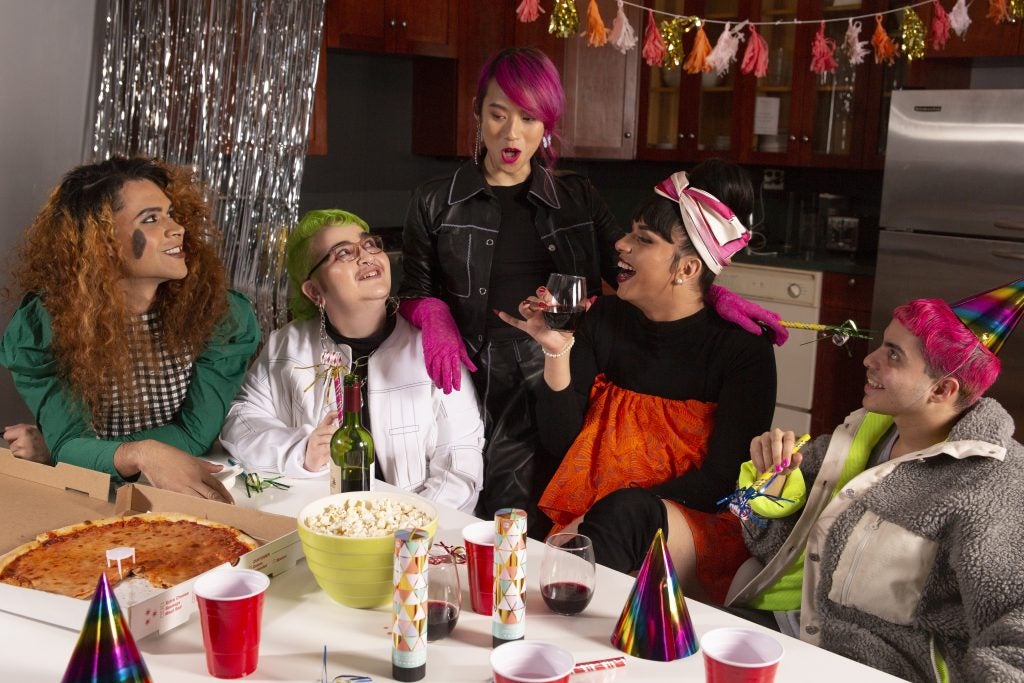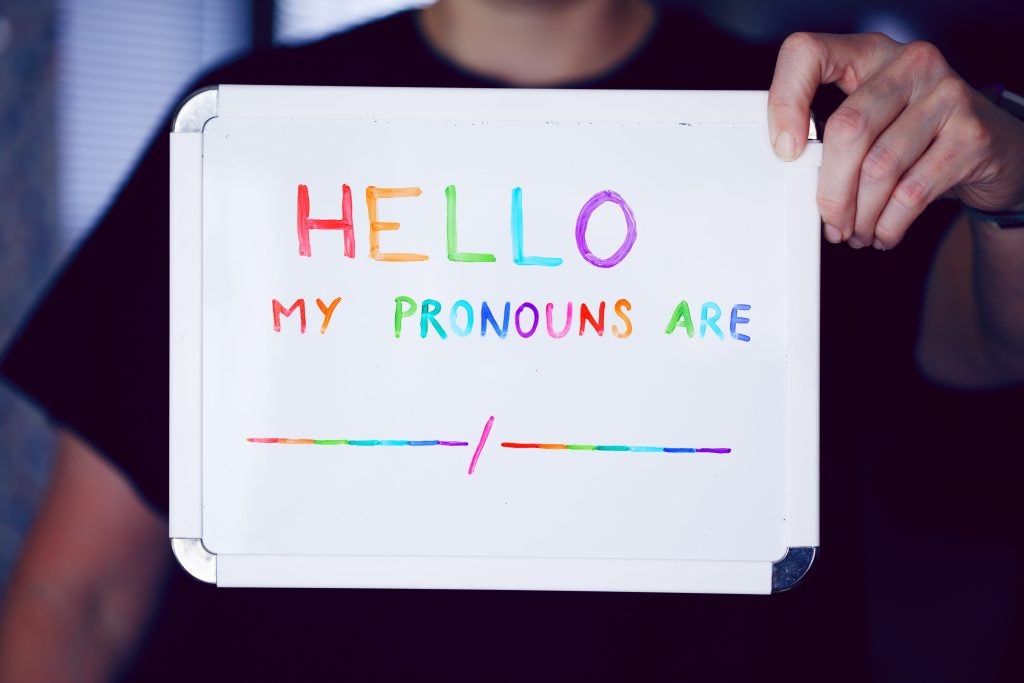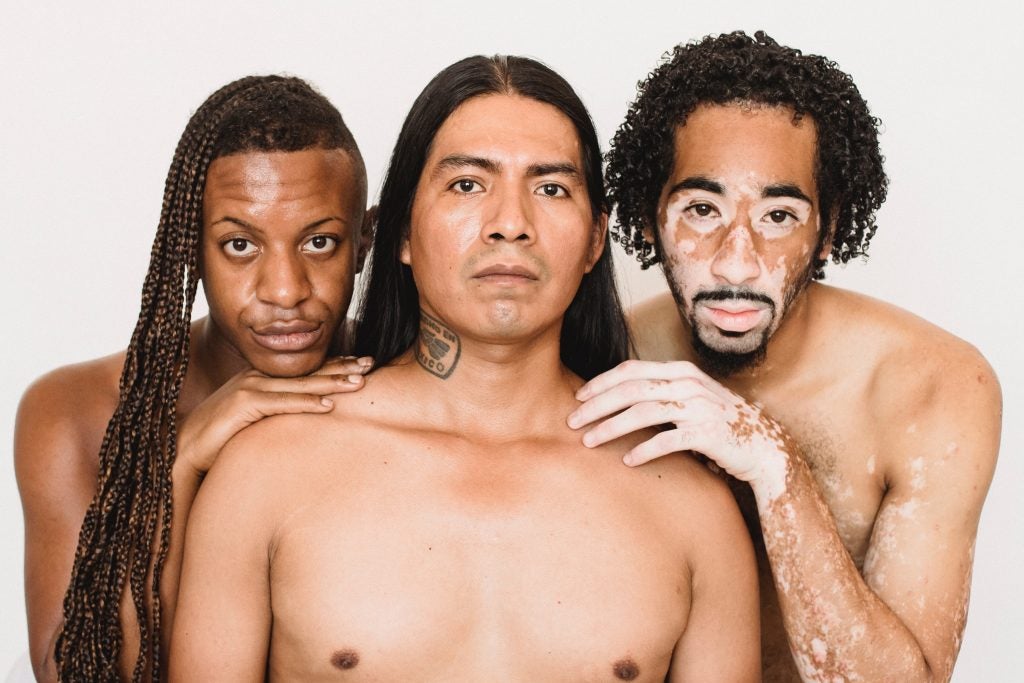Introduction

From the beginning of our lives, we are identified by our gender and sex. When we are born, we are given a sex on our birth certificate, generally male or female. The terms “gender” and “sex” are often incorrectly used interchangeably. When discussing related topics, it is important to distinguish between sex, gender, and sexuality. Although these terms may seem very similar, they actually describe three very different things.
A person’s biological and physical attributes comprise their sex. Generally, we are one of three sexes: male, female, or intersex. Some characteristics of sex include external genitalia, internal reproductive organs, sex chromosomes, sex hormones, and gonads.6 Gender identity, sometimes referred to simply as gender, is a person’s perception of who they are as male, female, neither, or both.6 Gender expression is an extension of gender identity. It is how a person behaves and presents themselves to the world – including how they dress, speak, act, and even move.5
Much of what constitutes gender is socially constructed, and is imposed on us from childhood. For example, the designation of certain toys and games as for boys or for girls – like racecars for boys and dolls for girls. Many children and even adults do not know why they feel they must act a certain way (like girls avoiding participating in sports, or boys masking their emotions), they just assume that it is what they are “supposed to do.”1 Gender roles are the set of ideas of what constitutes masculinity and femininity, and with them come certain expectations. The pressure to fit into these molds can have devastating consequences, such as anxiety, stress, insecurity, and low self-esteem that may follow a person for their entire life.1
These socially constructed aspects of gender are so engrained in our culture, and people who fit these roles often never question them simply because they don’t have to. For people who do not fit this mold, however, the pressure to be something that they are not can cause significant distress and mental health issues. Luckily, as society progresses, more and more people are challenging the gender norms imposed by our culture. It is becoming clearer that gender is based on more than just a person’s genitalia, and is a continuum rather than just black and white.6
Pronouns
Pronouns are words that refer to a person, place, or thing that are used in the place of an actual name. In the English language, some of these include she, him, it, or them. Traditionally, people have been referred to solely as he/him/his or she/her/hers, with ‘he/him/his’ used to refer to a male and ‘she/her/hers’ for a female. The pronouns ‘they/them/theirs’ have generally been reserved for talking about multiple people, and “it” refers to nonliving things.

As people have become more open about alternative sexualities, pronouns in turn have been altered and invented. She/her/hers and he/him/his are no longer the only singular pronouns. A person’s personal gender pronoun, or PGP, is the pronoun a person prefers to use for themselves.2 Many people who do not identify with a certain gender or who consider themselves to be of multiple genders prefer the pronouns “they/them/theirs,” even though using such words for a single person has traditionally been viewed as grammatically incorrect.
In recent years, new gender-neutral pronouns are increasing in popularity, such as “ze” and “hir.” Ze, pronounced “zee,” and alternatively spelled zie or xe, is used in place of the pronouns he, she, and they.2 Hir, pronounced like the word “here,” replaces her/hers, him/his, and they/theirs.2
It is very important to use a person’s correct PGP, even if it is not congruent with their biological sex or their outside appearance. Ignoring this wish can be very hurtful to a person and make them feel invalidated. When in doubt, feel free to ask someone what they would like to be referred to as! They will be appreciative of your efforts. If you accidentally misgender someone (by using the wrong pronoun),2 apologize as soon as you realize it and quickly move on (dwelling on your mistake can make the person feel embarrassed or uncomfortable). If you notice other people repeatedly using the wrong pronouns, you can be an ally and gently correct them (again, without dwelling on it or making a scene). Some people will still refuse to use the correct pronouns, and it is our job as allies to help our LGBTQ friends and acquaintances feel safe and accepted. Even though you cannot change someone else’s behavior, you can assure the person being misgendered that you respect and support them.
The following list of genders is not an exhaustive list, but it covers some of the most widespread gender identities.
Cisgender
Cisgender, also sometimes referred to as gender normative and very often shortened to “cis,” is used to describe people whose gender identity is congruent with their biological sex assigned at birth.4 The term was created to allow us to differentiate between cisgender and transgender people without normalizing one over the other. It originates from the Latin prefix “cis” meaning “on the same side of.” It is estimated that 99% of people identify as cisgender.4
Transgender
Transgender describes people whose gender identity is different from the sex they are assigned at birth. Traditionally, transgender has referred to someone who identifies as female but is biologically male or vice versa, but nowadays it is used as an umbrella term to encompass all people who do not identify with their assigned sex, regardless of whether they identify as male, female, genderqueer, or something else entirely.6 Used in this manner, it is often shortened to “trans*” in order to be more inclusive of all gender identities.7 The asterisk is used when referring to all alternative gender identities; “trans” (without the asterisk) is used to refer specifically to transmen and transwomen.7
It is very important to note that a person’s gender identity is completely separate from their sexual orientation,6 which indicates to whom they are attracted. Being transgender does not imply any specific sexual orientation, nor does it imply that a person desires hormonal treatment or sex-reassignment surgery. While some transgender individuals do undergo treatment to make their biological sex match with their identity, not all trans* people do. It is possible to identify as transgender without wanting to change one’s body.
Genderqueer/Genderfluid

Genderqueer, also referred to as genderfluid, falls under the trans* umbrella. It describes people who do not feel restricted by the gender binary or typical gender roles or stereotypes.6 Genderqueer people often have a wide range of gender expression, and some of their mannerisms and preferences can even vary from day-to-day.6 Although some choose to identify simply as genderqueer, others who consider themselves to be genderqueer may identify as male, female, somewhere in the middle, or may not identify with a gender at all.6
Agender
A person who is agender feels that they are neither male nor female. Some people identify as agender as a way to reject the gender binary.3
Bigender
The term bigender can be used to describe a variety of identities involving two genders, which could include male, female, or nonbinary genders.5 Some people who consider themselves bigender may identify with both the male and female genders, while others will move between masculine and feminine expression. Still others will feel like they have distinct male and female personas, or that they are two separate genders in one person.
Intergender
Intergender is another nonbinary and trans* identity. Someone who is intergender identifies as in between two genders, and may be a combination of both.4 These two genders could be male, female, or another nonbinary gender identity.
Pangender
Pangender is an identity comprised of many gender identities and expressions.5 A pangender person’s identity could be fixed, so that they feel that they are multiple genders at once. It could also be fluid, meaning that they move between genders. Pangender very often includes nonbinary genders. People who identify with only two genders, most commonly male and female, are generally considered to be bigender or genderqueer rather than pangender.
References
1. Culp-Ressler, Tara. “Forcing Kids to Stick to Gender Roles Can Actually Be Harmful to Their Health.” ThinkProgress. Center for American Progress Action Fund, 7 August 2014. Web. 29 January 2016.
2. “Gender Pronouns.” Lesbian, Gay, Bisexual, Transgender Resource Center. University of Wisconsin, Milwaulkee. n.d. Web. 20 February 2016.
3. Murphy, Tim. “A Report From the Agender, Aromantic, Asexual Front Line of the Campus Queer Movement.” The Cut. New York Magazine, 22 October 3016. Web. 29 January 2016.
4. Steinmetz, Katy. “This is What ‘Cisgender’ Means.” Time Living. Time, inc., 23 December 2014. 29 January 2016.
5. “Trans and Queer Terms.” Trans Wellness. JAC Stringer, 2013. Web. 29 January 3016.
6. “Understanding Gender.” Gender Spectrum. Gender Spectrum, n.d. Web. 29 January 2016.
7. “What does the asterisk in “trans*” stand for?” It’s Pronounced Metrosexual. It’s Pronounced Metrosexual, n.d. Web. 20 February 2016.
Last updated: 28 February 2016
